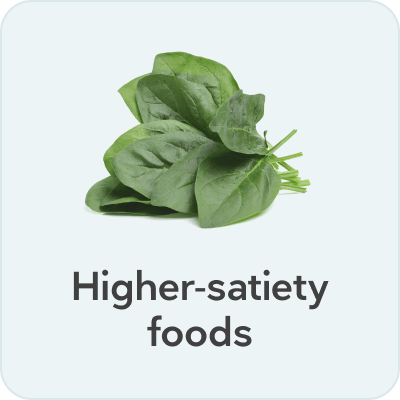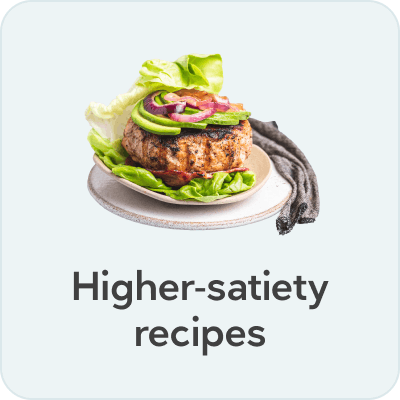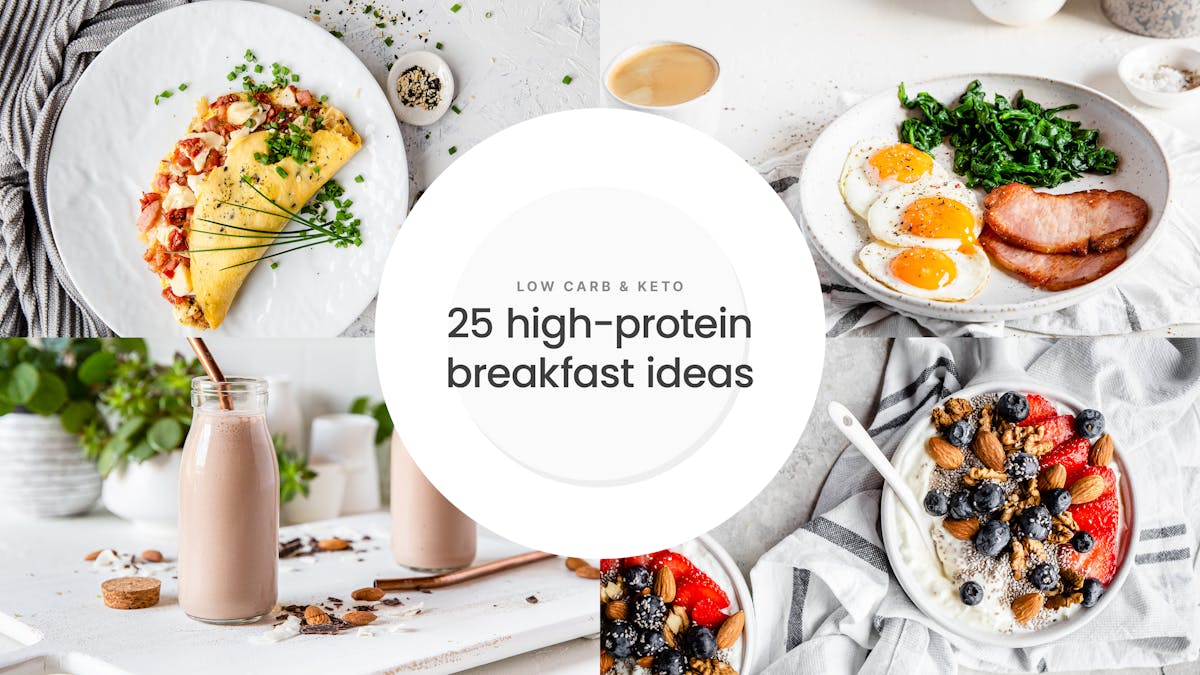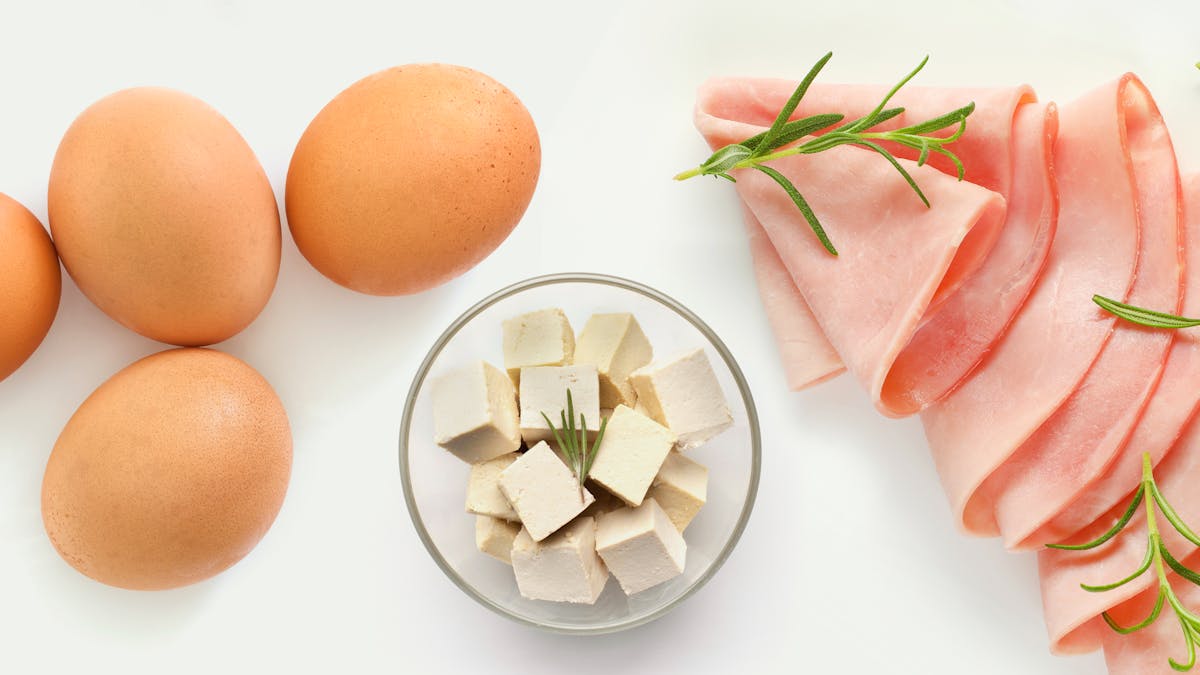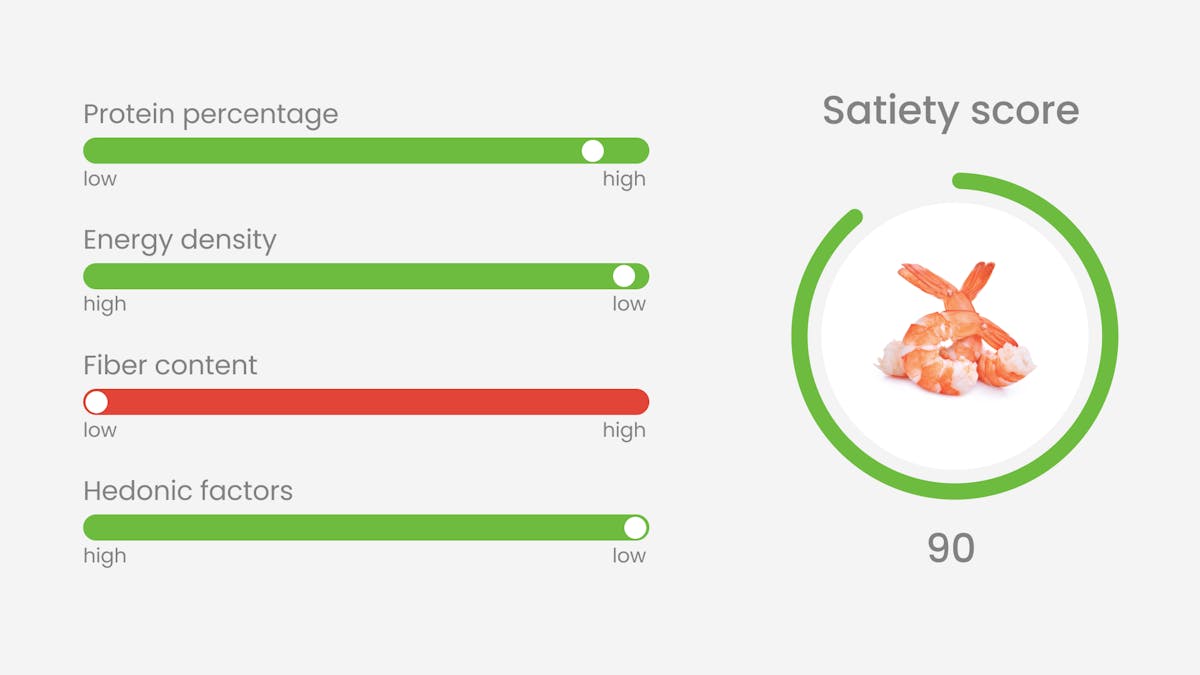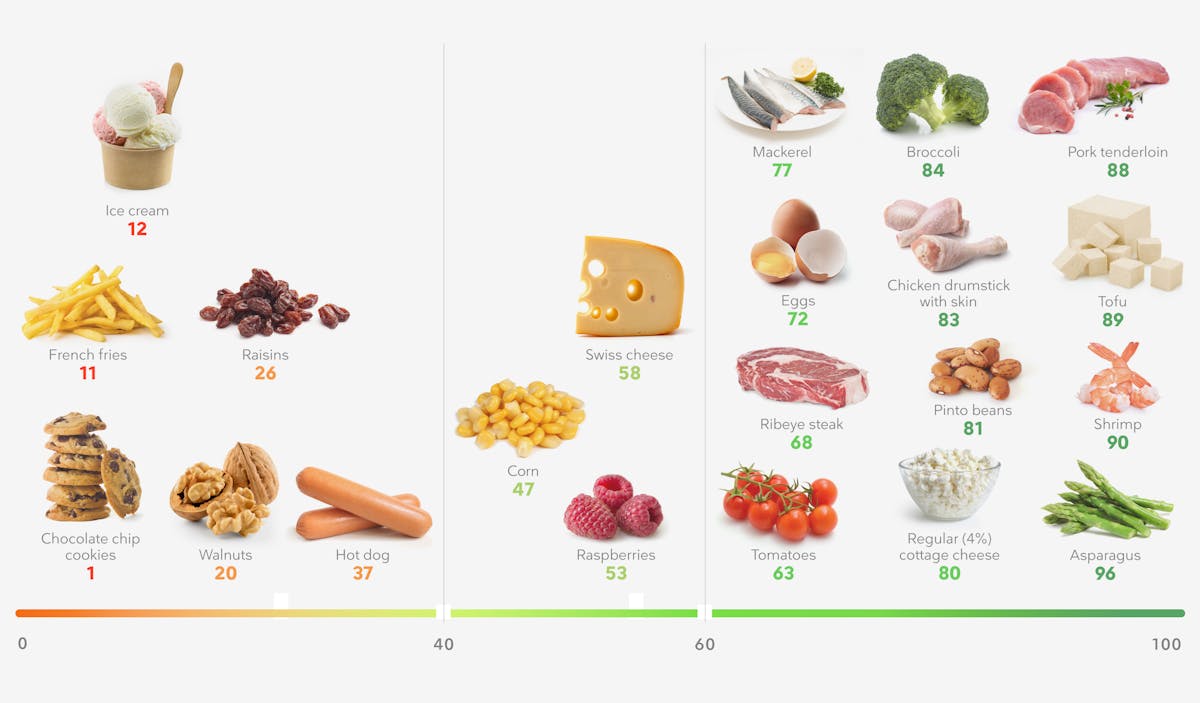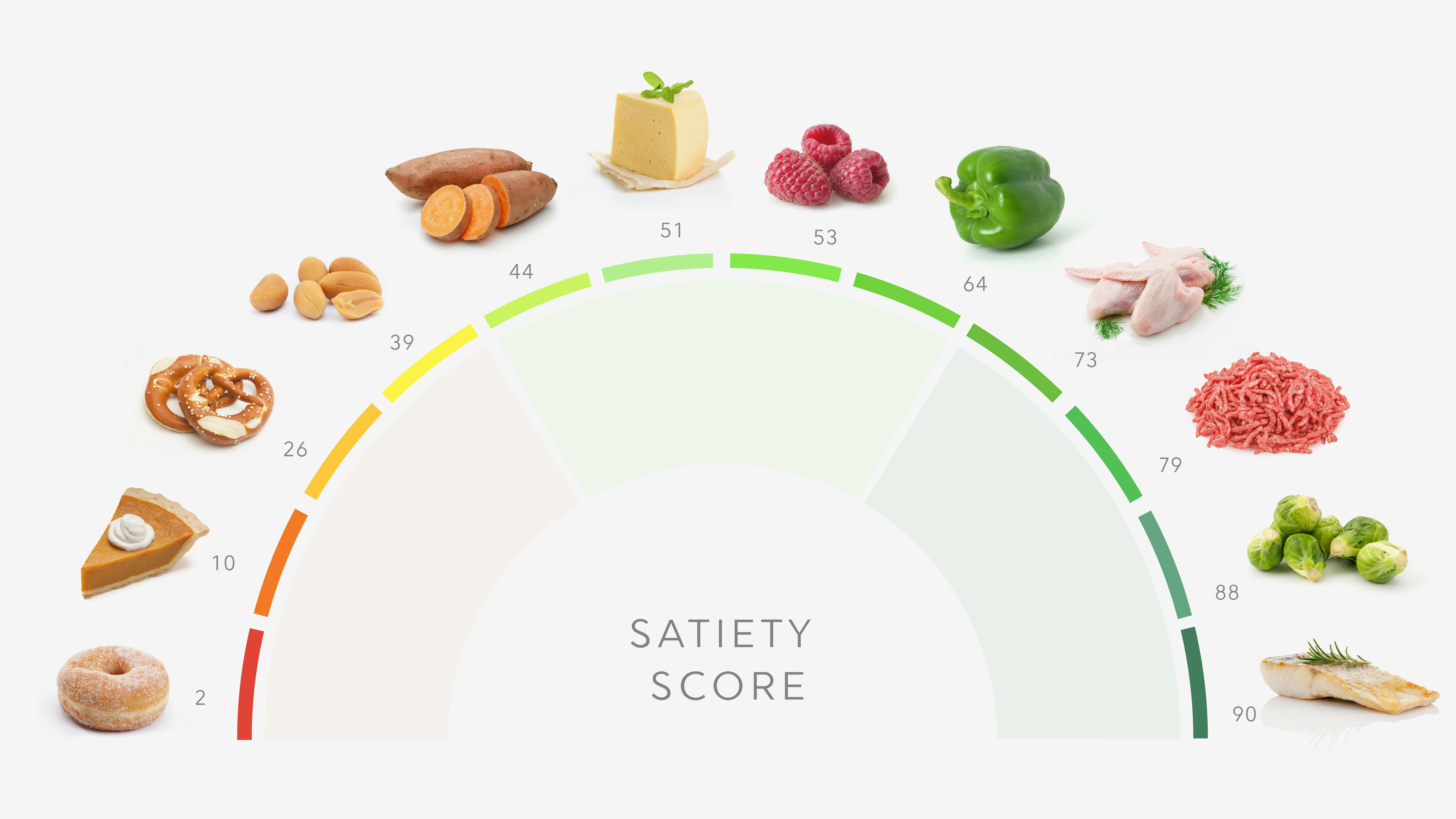The science of satiety per calorie
Evidence based
At Diet Doctor, we want to help everyone understand the concept of satiety per calorie and how it can contribute to healthy weight loss. That means eating better. It means filling up on delicious food, getting all the nutrition you need, and not being hungry – all while consuming less energy.
The question is simple: Which foods are the most filling, nutritious, and satisfying per calorie? If you know that, you can focus on those foods in order to control hunger, which can help with healthy weight loss.
But even though the concept is simple, implementing it in your everyday life is complicated. Understanding satiety is one thing, but there are currently no tools to help you effectively eat for satiety. We’re aiming to change that with our sister brand Hava.
In this educational guide, we’ll review the nutrition science behind a satiety-per-calorie approach. Then, once you are up to date on the science, you can read our practical guides to learn how to put higher-satiety eating into practice. By following a higher-satiety approach, you will know what we mean by “calories count, but you don’t have to count them.”


What is satiety?
Satiety essentially means the feeling of being full or no longer hungry. It doesn’t mean feeling overfull or stuffed. Instead, it might help to think of it as the absence of wanting more food (e.g., not feeling hungry).
Preventing or minimizing hunger could be one of the most important aspects of a sustainable, healthy weight loss routine.
Why satiety per calorie?
It can be easy to avoid hunger for a while by eating a huge meal. But huge meals come with plenty of calories. And too many calories can sabotage your goal of losing weight and improving your health.
That’s why we want to introduce the idea of satiety per calorie.
Eating foods that offer higher satiety per calorie allows you to feel fuller with fewer calories. That way, you can control hunger while eating the right number of calories for you.
Why do we think that a focus on satiety per calorie can help you create a sustainable calorie deficit and lose weight? Because you’ll prioritize foods that provide you with all the protein and nutrition you need while beating back hunger.
Plus, we think you’ll find higher-satiety foods you can love. That combination is a recipe for a healthy, sustainable way of eating.
The science of satiety
Multiple factors can affect how you feel satiety, hunger, or fullness. Based on nutrition science and clinical experience, we believe there are four well-established qualities that make a food more satisfying:
- protein percentage
- energy density
- fiber content
- a low hedonic factor
Different factors, such as carbohydrate content, glycemic index, micronutrient content, speed of eating, and others may also contribute to satiety. However, we believe these factors are directly or indirectly captured by the four main variables listed above and therefore do not likely further impact a food’s satiety per calorie.
Let’s look at each component individually.
Protein percentage
Research consistently shows that higher protein diets are more satiating than lower protein diets and that people eating more protein tend to eat fewer calories.
There’s a theory called “protein leverage” that suggests humans and many species of animals keep eating until they get enough protein. You can listen to our podcast with the originators of the theory, Professors Raubenheimer and Simpson from Australia, for more details.
In brief, research performed on a variety of animals, including humans, suggests that our bodies instinctively search for a certain amount of protein.
The protein leverage hypothesis states that by eating a diet with more high protein foods, we naturally reduce our overall caloric intake, thereby aiding healthy weight loss.
In addition, protein-containing whole foods tend to provide nearly all the micronutrients your body needs.
Increasing the protein you eat can further help with satiety by increasing satiety hormones such as cholecystokinin and peptide YY (CCK and PYY). These hormones signal to your brain that you have eaten enough and no longer crave or need to search for food.
And since protein has a higher thermic effect (meaning the calories you burn while digesting a food) than carbs or fat, eating more protein can further help maintain a negative energy balance.
To learn more about the benefits of higher protein diets, we have detailed guides focusing on protein percentages and high protein foods.
Energy density
Energy density refers to how many calories a food has per gram or ounce. Foods with high energy density have lots of calories packed into a small amount of food, while foods with low energy density offer fewer calories in that same amount of food.
For example, spinach has a low energy density. One would have to consume an unrealistically large volume of spinach to overeat calories. Instead, when you eat lots of spinach, you’ll fill up your stomach and get some needed nutrients without digesting many calories.
Potato chips, donuts, and oils have a very high energy density. You don’t have to consume many grams or ounces of these foods to get a lot of calories.
Not surprisingly, multiple studies report that lower-energy-density diets correlate with improved satiety and weight loss compared to higher-energy-density diets.
Lower-energy-density foods also tend to be higher in fiber and water, and lower in starch, sugar, and fat. This may account for some, but not all, of the satiating effect.
Fiber content
The data on fiber are more variable, but overall, fiber appears to have a beneficial effect on short-term satiety.
It’s well accepted that the fiber in fruits and vegetables helps give bulk to food, even as it is digested. This extra bulk in your digestive tract could contribute to feelings of fullness and signals to stop eating.
However, as mentioned previously, low-energy-density foods tend to also be higher fiber foods. It is hard to tease out the effects of fiber independent of its presence in low-energy-density foods. That may be why not all studies find independent benefit from fiber supplements.
Regardless, it appears that when higher fiber levels occur naturally in foods, they contribute to short-term satiety.
Hedonic factor
The final major contributor to satiety is a food’s hedonic factors.
Scientific data show that certain foods have addiction-like properties, stimulating someone to eat more, despite the absence of traditional hunger.
A classic example of this would be a snack food, like potato chips, that you can’t stop eating, even after you are no longer hungry.
For many people, carbs or fat by themselves — a plain baked potato or a spoonful of canola oil — may not be tempting. But the combination of them, paired together in a potato chip, is not only tempting, but hard to stop eating.
In addition, adding sugar to any food or drink may make it more stimulating for the brain and thereby increase cravings for more.
By choosing foods with low levels of hedonic factors, you may be better able to control your cravings and reduce your propensity to overeat unneeded calories.
What about carbs and glycemic index?
Carbohydrate content and the glycemic index/load of individual foods did not make our list of the top four satiety factors.
That isn’t because we feel carbs and glycemic factors are not important. Not at all. In fact, some studies report higher carb foods cause more brain reward stimulation, potentially leading to overeating.
We believe the satiety-lowering qualities of high-glycemic foods and refined or simple carbs are already accounted for in our model. This is because they tend to have lower protein content, higher energy density, lower fiber content, and higher hedonic factors.
Other factors
There may be other factors that affect feelings of fullness or satiety, but it is unclear if they independently impact satiety similar to the four main factors listed above.
For instance, solid and higher-viscosity foods appear to be more satiating than liquids and lower-viscosity foods.
However, the research into these other factors doesn’t show a strong, consistent impact on satiety, above and beyond the evidence-based impact of protein percentage, energy density, fiber content, and hedonic factors.
What are the highest satiety-per-calorie foods?
Since satiety increases with higher protein percentage, it should be no surprise that some of the highest satiety-per-calorie foods are seafood, meat, chicken, eggs, soy, and low fat dairy. And, since satiety increases with lower energy density, fibrous vegetables are also top options.
To learn more about high-satiety-per-calorie foods, please see our guide: Higher-satiety eating: the best foods
Putting it into practice
Now that you understand the science behind satiety per calorie, it’s time to put your knowledge into practice. While you can start by exploring our recipes which now include satiety scores in the nutrition information section, and try our high protein meal plans, it can be challenging to navigate this journey without the right tool.
That’s where Hava comes in. Our innovative satiety tool simplifies the process, offering recommendations and insights to help you make the most of higher-satiety eating. Sign up for early access to Hava now.




